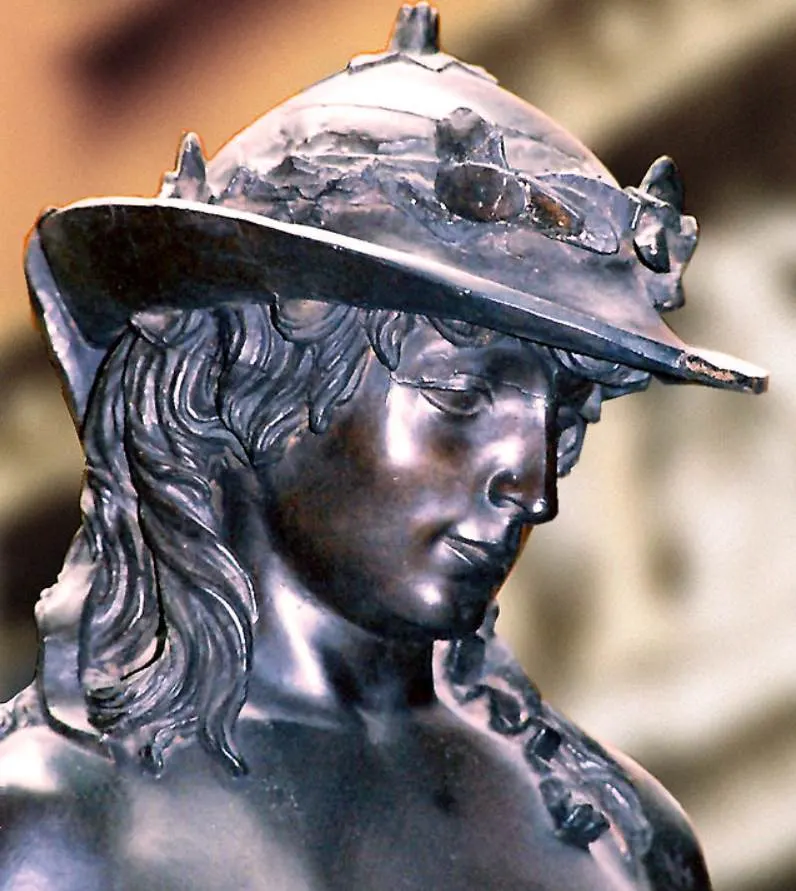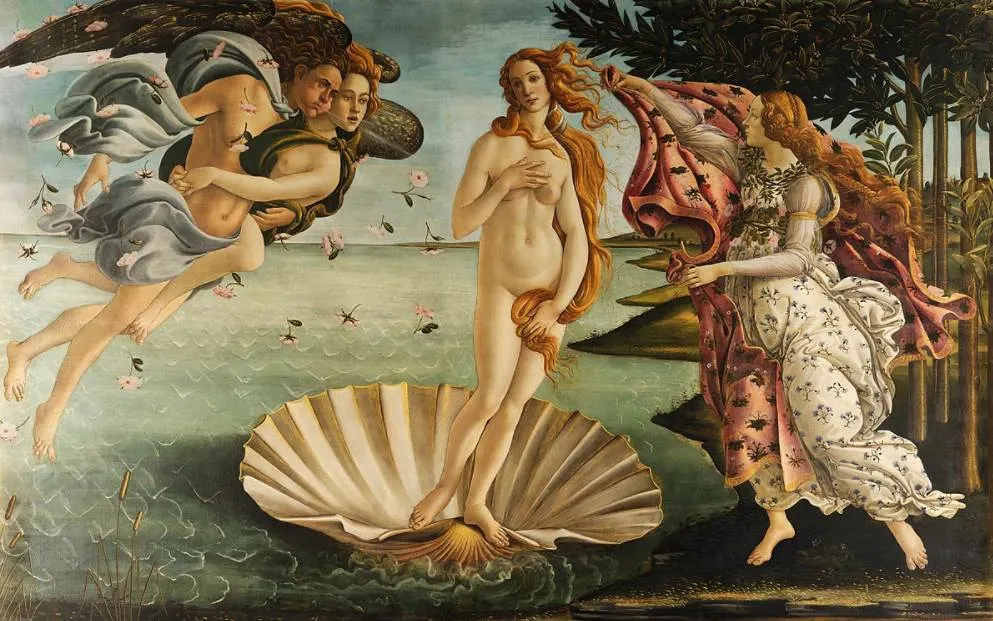The Renaissance was one of the most important periods in Western history. The revival of interest in the classical world marked the transition between the Middle Ages and the modern world.
Renaissance translates to “Rebirth” and that’s precisely what it meant. Surpassing the magnificent achievements of classical antiquity was the goal, and it resulted in social changes that are still felt today.
This article focuses on Renaissance art and how it transformed the way Renaissance artists produced artworks as opposed to art produced during the Romanesque and Gothic periods.
History of Renaissance art
The Renaissance spanned multiple centuries, spanning roughly from the late 13th century until the early 16th century.
Like most early art movements, there is no clear transition point between the Gothic era and the Renaissance so the exact start date has been up for debate.
Because of this notion, the early phase is often referred to as the “Proto-Renaissance.” This period emerged in Italian cities such as Pisa, Siena, and Pistoia, and lasted between 1280 and 1400.
The Early Renaissance emerged in Florence in 1400, the city often referred to as the Birthplace of the Renaissance. Sculpting a set of bronze doors for the Florence Baptistery marked the non-official starting point.
Integrating a sense of naturalism into Renaissance sculptures and reliefs was the first step. The works of artists like Brunelleschi, Donatello, and Ghiberti were pivotal to this development.
One of the most fascinating developments of the Renaissance was the use of slow-drying oil to produce paintings instead of the fast-drying tempura.

This material wasn’t invented in Northern Europe, more specifically by Early Netherlandish artists such as Jan van Eyck and Robert Campin in the 1420s, but it was perfected by these artists.
This allowed Renaissance artists to focus a lot more on details and add the sense of naturalism that differentiated Renaissance art from art produced by Gothic artists.
Although court artists were part of the French Reniassance, Italy remained the center in the 15th century. It eventually culminated in the High Renaissance around 1495.
This brief period between 1495 and 1520 was one of the ultimate high points in art history as several incredibly talented people produced art together. Leonardo da Vinci, Michelangelo, and Raphael were the key figures of this era.
The death of Raphael in 1520 marked a turning point and Mannerist artists emerged who exaggerated the ideals of the artist of previous generations.

Main characteristics of Renaissance art
The development of Renaissance art went parallel with the social changes that occurred all across Europe between the 14th and 16th centuries.
Renaissance Humanism is the term used to describe the revival in the study of classical antiquity. Archaeological discoveries of art produced in ancient times certainly played a key role.
Below is a list of characteristics of Renaissance art that differentiates it from Gothic art.
- Proportion – While art produced during the Middle Ages appears two-dimensional, developments in art related to linear perspective allowed artists to create three-dimensional artworks.
- Vanishing point – Also known as foreshortening, this technique allowed artists to create the illusion of depth in both art and Renaissance architecture.
- Sfumato – Leonardo da Vinci coined and perfected this technique which aims to soften the lines between colors. This allowed for an even more realistic sense of depth in artworks.
- Chiaroscuro – Integrating one or more light sources allowed the artist to highlight elements by using a contrast between light and dark. This technique emerged in the Renaissance and was perfect in the Baroque era, most notably by Caravaggio.
- Naturalism – The idealized sculptures of the Gothic era were gradually replaced with figures that looked real and the same applies to paintings.

Types of Renaissance art
Another important development in Renaissance art was the establishment of a new era of patronage. Cosimo de Medici (1389-1464), a Florentine banker and politician was a pioneer in this field.
He spent approximately 600,000 gold florins on artworks, the equivalent of well over $500 million today. Most importantly, his patronage was not associated with the church as it was in previous centuries.
Regardless of this notion, the Catholic church was still a major patron of the arts throughout the Renaissance, so many works were commissioned to decorate churches.
Below is an overview of artworks that were produced during the Renaissance era.
- Altarpieces – Although Cosimo de Medici set a new standard for private patronage of the arts, artworks commissioned by the church were often intended to decorate the main altar or chapels.
- Fresco cycles – Murals had been produced for centuries when the Renaissance emerged. Reniassance artists took it a step further as these frescoes were a lot more sophisticated and didn’t necessarily feature religious subjects. The Raphael Rooms at the Apostolic palace is the epitome of fresco cycles produced during this period.
- Sculptures – The discovery of ancient sculptures resulted in the production of a completely new type of sculpture. Ghiberti and Donatello were pioneers in integrating a sense of realism into sculptures unlike before.
- Mythological and Historical paintings – The renewed interest in ancient literature allowed artists to widen their range in terms of subject matter. While Romanesque and Gothic art was solely focused on religious subjects, this radically changed during the Renaissance.

Notable Renaissance artworks
Some of the most famous artworks in history were reproduced during the Renaissance period. Artists who lived during this period were highly influential and shaped the course of art history.
Below are some of the highlights of artworks that were produced during the Renaissance period.
- Ghent Altarpiece – The incredible polyptych was produced by the brothers Hubert and Jan van Eyck. It’s one of the world’s treasures and the result of the perfecting of oil painting in the early 15th century.
- Mona Lisa – This is arguably the most famous painting ever produced and depicts a Florentine noblewoman. It’s the ultimate highlight of the collection of paintings at the Louvre.
- Statue of David – A huge statue by Michelangelo that was intended to decorate the roof of Florence Cathedral. It never made it there as it was too heavy to lift into position.
- The Birth of Venus – A fascinating Venus painting by Sandro Botticelli that depicts the birth of the Roman goddess as she emerges from the sea.
- The Last Supper – The world-famous version by Leonardo of one of the most popular topics in art history.
- Sistine Chapel ceiling – It took Michelangelo 4 years to cover the ceiling of this chapel at the Vatican. This incredible fresco features the world-famous “Creation of Adam.”
If you want to discover more works, check out the article with some of the most famous Renaissance paintings.

